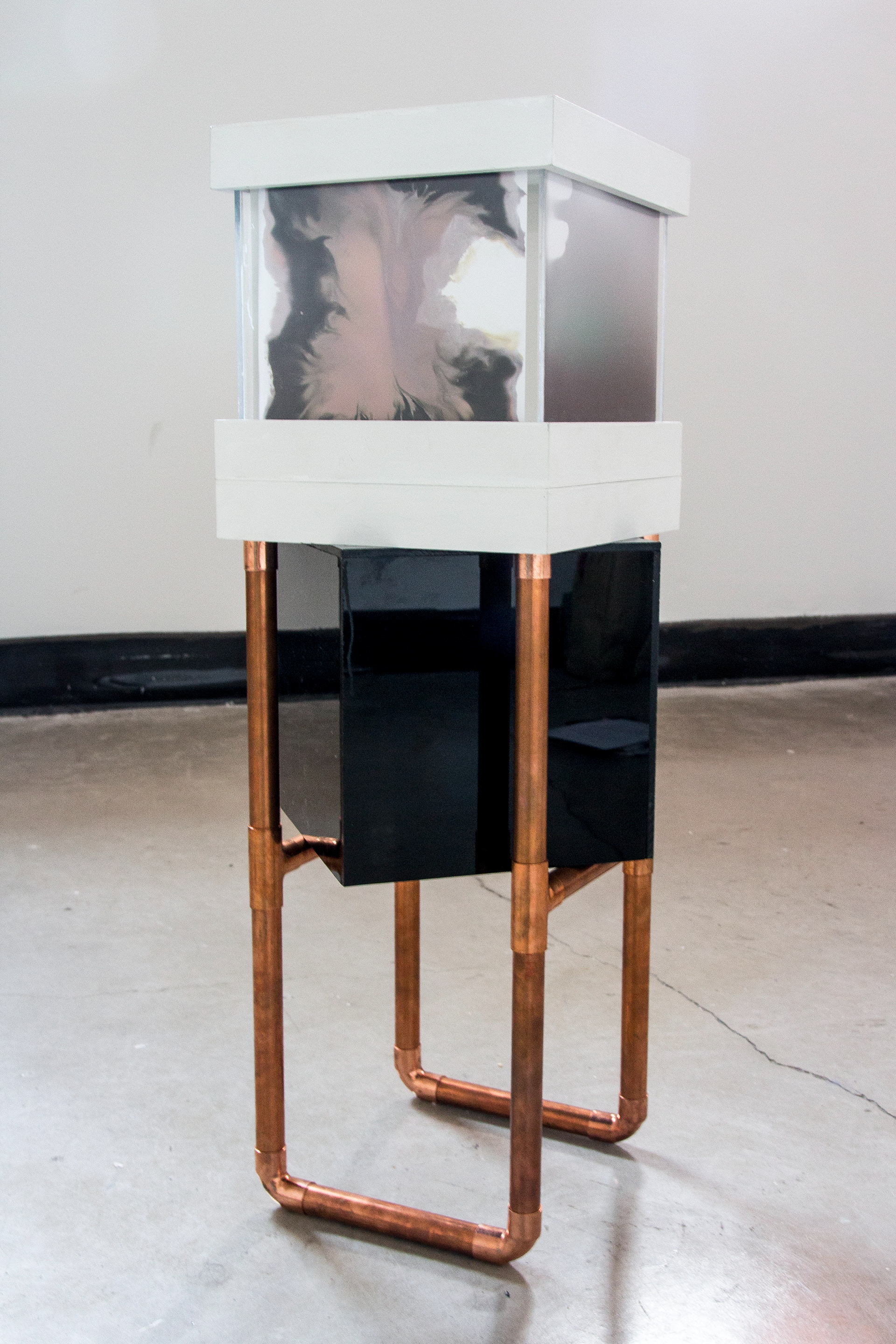


Study of Minimalism: Camera obscura
This study explores minimalist theory through subverting the traditional ideology in photography that the image presented within the frame is of higher value than the frame itself, and challenges that hierarchy between work and framework. Both are presented here, image and framework in conversation with each other, in a symbiotic relationship: depending on each other visually, physically and conceptually.
Due to my recent interest in minimalism, I aimed to explore it through producing a piece that spoke to modernist theory as well as photography. It led me to consider formalism, of reducing a medium down to its most essential formal visual elements. In photography, that concerns light, an opening that serves as an aperture and lens and a projection surface.
This study explores minimalist theory through subverting the traditional ideology in photography that the image presented within the frame is of higher value than the frame itself, and challenges that hierarchy between work and framework. Both are presented here, image and framework in conversation with each other, in a symbiotic relationship: depending on each other visually, physically and conceptually.
Due to my recent interest in minimalism, I aimed to explore it through producing a piece that spoke to modernist theory as well as photography. It led me to consider formalism, of reducing a medium down to its most essential formal visual elements. In photography, that concerns light, an opening that serves as an aperture and lens and a projection surface.
Minimalism is based on notions of geometric form, an emphasis on simple (often industrial) materials, repetition of structures, an absence of artistic expression.
To further emphasize formalist elements, I structurally designed the piece to be vertically segmented into three sections in reference to the rule of thirds. Maintaining continuity, this piece comprises three materials; wood, acrylic and copper piping and additionally serves three functions, a photographic device, sculpture, and frame.
Positioned between the cradled wood panels the black acrylic box acts as a camera obscura; it is pierced with the slightest hole on one side and can be loaded with light-sensitive paper on the opposing side, that can produce an image with an appropriate exposure time. Once the light-sensitive paper is developed, up to four images can be subsequently displayed within the clear acrylic box.
Positioned between the cradled wood panels the black acrylic box acts as a camera obscura; it is pierced with the slightest hole on one side and can be loaded with light-sensitive paper on the opposing side, that can produce an image with an appropriate exposure time. Once the light-sensitive paper is developed, up to four images can be subsequently displayed within the clear acrylic box.
